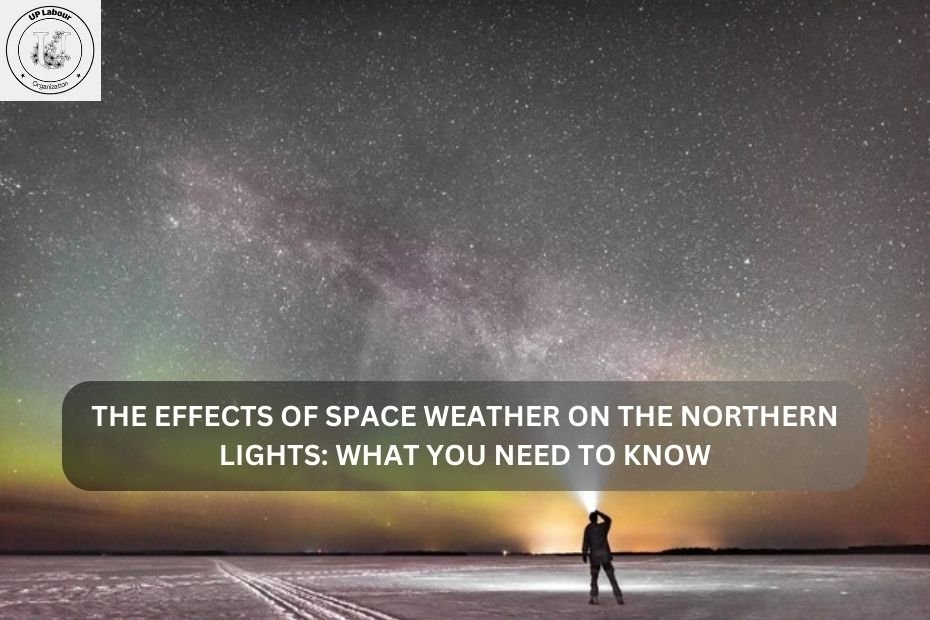The Northern Lights, or Aurora Borealis, are one of nature’s most captivating displays. With their vibrant greens, pinks, and purples dancing across the night sky, they have captured the imagination of people around the world. But have you ever wondered what causes these spectacular light shows? The answer lies in space weather—a fascinating intersection of science and beauty. In this article, we will explore how space weather affects the Northern Lights and what you need to know to fully appreciate this incredible phenomenon.
What Are the Northern Lights?
Before diving into the effects of space weather, let’s take a moment to understand what the Northern Lights are. The Aurora Borealis is a natural light display that occurs primarily in high-latitude regions around the Arctic. It is caused by charged particles from the sun colliding with gases in Earth’s atmosphere. These collisions create bursts of light, resulting in the beautiful colors we see in the sky.
How Do the Northern Lights Form?
To grasp how space weather affects the Northern Lights, it’s essential to understand the basics of their formation:
- Solar Wind: The sun constantly emits a stream of charged particles known as solar wind. This wind travels through space and can vary in intensity, influenced by solar activity.
- Earth’s Magnetic Field: When these charged particles reach Earth, they encounter its magnetic field. This field acts as a shield, redirecting most of the solar wind around the planet.
- Collisions with Atmospheric Gases: However, some of the charged particles manage to penetrate the magnetic field near the polar regions. Once they enter the atmosphere, they collide with gases like oxygen and nitrogen, resulting in the stunning light displays we know as the Northern Lights.
Understanding Space Weather
Now that we have a basic understanding of the Northern Lights, let’s delve into space weather. Space weather refers to the environmental conditions in space, particularly the behavior of the sun and its effects on the solar system. Key elements of space weather include solar flares, coronal mass ejections (CMEs), and geomagnetic storms. Let’s break these down:
Solar Flares
Solar flares are sudden bursts of energy on the sun’s surface. They release massive amounts of radiation, which can affect radio communications on Earth. These flares can also enhance the solar wind, sending more charged particles into space. When these particles reach Earth, they can intensify the Northern Lights.
Coronal Mass Ejections (CMEs)
CMEs are massive bursts of solar wind and magnetic fields rising above the solar corona or being released into space. When a CME is directed toward Earth, it can cause significant disturbances in the magnetic field, leading to stronger geomagnetic storms. These storms enhance the visibility and intensity of the Northern Lights, creating more vivid and widespread displays.
Geomagnetic Storms
Geomagnetic storms occur when there is a significant disturbance in Earth’s magnetic field, often triggered by solar flares or CMEs. These storms can lead to a more substantial influx of charged particles entering the atmosphere, enhancing the Northern Lights. The intensity of the storm can affect how far south the auroras can be seen, sometimes allowing them to be visible in places that don’t usually experience them.
The Connection Between Space Weather and the Northern Lights
Now that we’ve established what space weather is, let’s explore how it affects the Northern Lights. The relationship is quite straightforward: stronger space weather leads to more intense and widespread auroras.
The Impact of Solar Activity
When the sun is particularly active, such as during a solar maximum (a period of heightened solar activity in the 11-year solar cycle), the likelihood of seeing the Northern Lights increases. During these times, solar flares and CMEs occur more frequently, resulting in more opportunities for stunning auroral displays.
Conversely, during solar minimum, when solar activity is low, the chances of witnessing the Northern Lights diminish. This cyclical nature of solar activity means that the best times to see the auroras can vary greatly depending on the sun’s behavior.
Forecasting the Northern Lights
One of the exciting aspects of space weather is that scientists can predict when conditions will be favorable for auroras. Space weather forecasting involves monitoring solar activity and using satellites to track solar wind and CMEs. Tools such as the NOAA Space Weather Prediction Center provide real-time data and forecasts, allowing enthusiasts to plan their Northern Lights viewing.
For those hoping to catch a glimpse of the auroras, checking these forecasts can make all the difference. When a solar flare or CME is detected, it’s a good indication that the Northern Lights may be particularly vibrant in the coming days.
Where to See the Northern Lights in the USA
If you’re eager to witness the Northern Lights, certain locations in the USA are more favorable than others. The best places to see the Northern Lights typically lie within the auroral oval, a ring-shaped zone around the magnetic pole. Here are some top spots in the USA:
1. Alaska
Alaska is undoubtedly one of the best places to view the Northern Lights. Cities like Fairbanks and Anchorage offer excellent opportunities, with minimal light pollution and frequent auroral activity. The optimal time to visit is during the winter months, from late September to early April.
2. Northern Minnesota
Minnesota, particularly around the Boundary Waters Canoe Area Wilderness, offers dark skies and a great chance to see the auroras. The best viewing times are also during the winter months.
3. Michigan’s Upper Peninsula
The Upper Peninsula of Michigan provides another fantastic viewing location. Places like Marquette and the Keweenaw Peninsula are known for their stunning displays.
4. Montana
Montana’s Glacier National Park and surrounding areas offer breathtaking scenery and opportunities to see the Northern Lights. The lack of light pollution enhances the visibility of the auroras.
5. Maine
Maine is another great destination for aurora viewing, particularly in the northern regions. Acadia National Park can provide excellent opportunities for witnessing the Northern Lights.
Tips for Viewing the Northern Lights
If you’re planning to chase the Northern Lights, here are some helpful tips to enhance your experience:
- Check the Forecast: Keep an eye on space weather forecasts to identify when auroral activity is expected to be high.
- Choose the Right Location: Look for dark areas away from city lights for the best visibility. Higher latitudes closer to the Arctic Circle are ideal.
- Dress Warmly: Since Northern Lights viewing often takes place in cold winter months, dress in layers to stay warm.
- Be Patient: The Northern Lights can be unpredictable. Sometimes, you may need to wait for hours for the display to appear.
- Bring the Right Gear: A good camera can help you capture the beauty of the auroras. Consider a tripod and long-exposure settings for the best photos.
The Cultural Impact of the Northern Lights
Beyond their scientific and natural beauty, the Northern Lights hold cultural significance for many communities. Indigenous peoples, such as the Inuit and Saami, have rich folklore surrounding the auroras. They are often seen as spiritual phenomena, representing the souls of ancestors or deities. Understanding this cultural context can deepen your appreciation for the Northern Lights.
In contemporary culture, the Northern Lights have inspired countless works of art, literature, and photography. They continue to capture the imagination of people worldwide, making them a symbol of natural beauty and wonder.
Conclusion
The Northern Lights are a mesmerizing natural phenomenon, and understanding the effects of space weather enhances our appreciation for them. The interplay between solar activity, geomagnetic storms, and the stunning displays of light creates a unique experience for those fortunate enough to witness them. Whether you’re an avid aurora chaser or simply someone fascinated by nature, the Northern Lights remind us of the beauty and mystery of our universe. So, the next time you gaze up at the night sky and see the dancing lights, you’ll know a little more about what makes this phenomenon so special. Happy aurora hunting!

